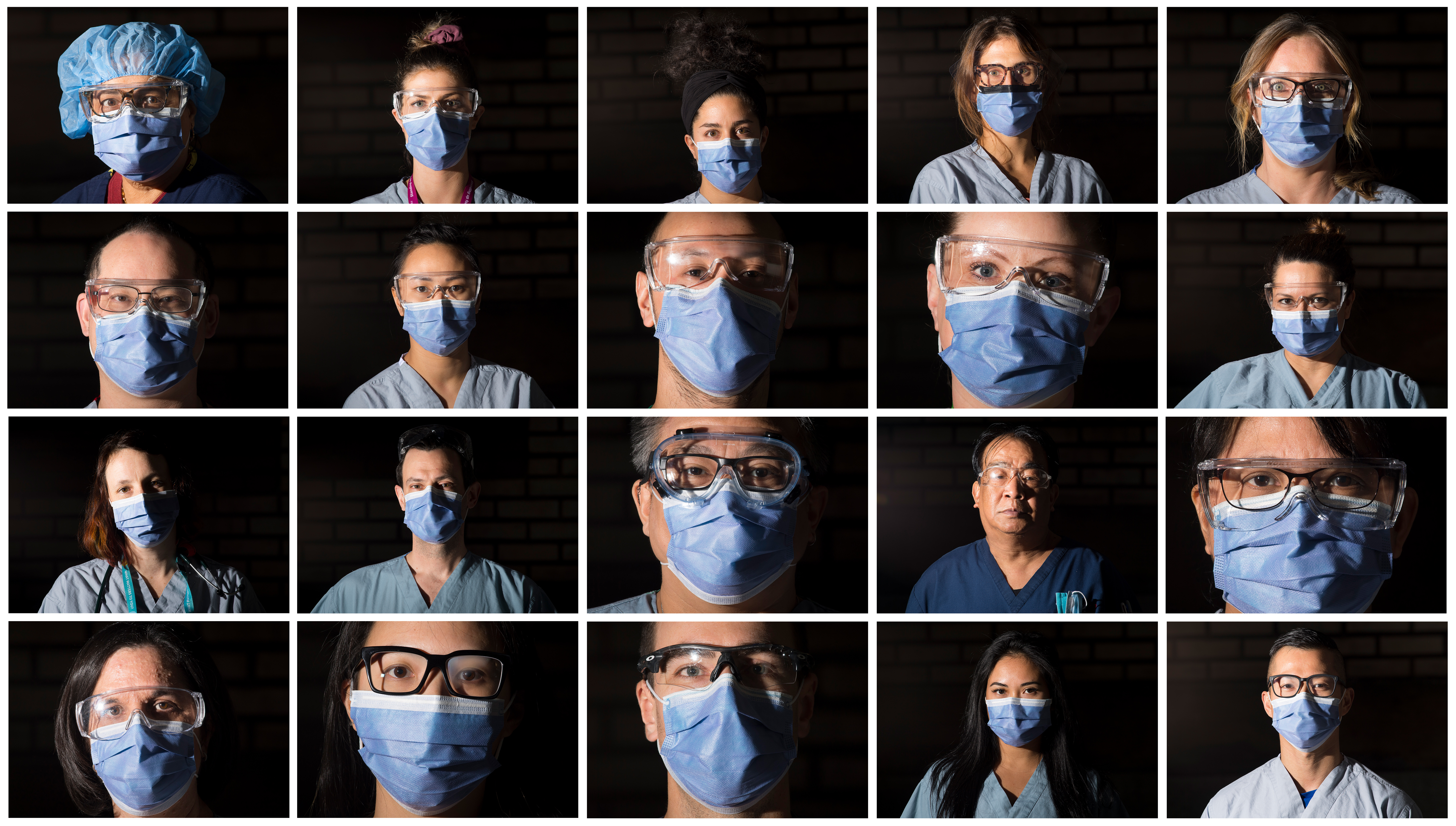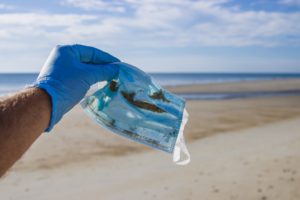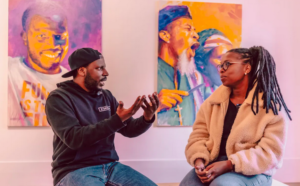VANCOUVER — The call came in on an afternoon in March: a patient at a medical clinic in Vancouver complained of chest pains.
Paramedic Jeff Booton watched the details flash across the screen as he and his partner made their way to the clinic.
It was his first potential case of COVID-19 and he felt both trepidation and a sense of duty.
“I see this job as working in the service of people. And getting to do so in the context of a pandemic is obviously wrought with fear and apprehension some days, but it’s work that still resonates with me,” he said.
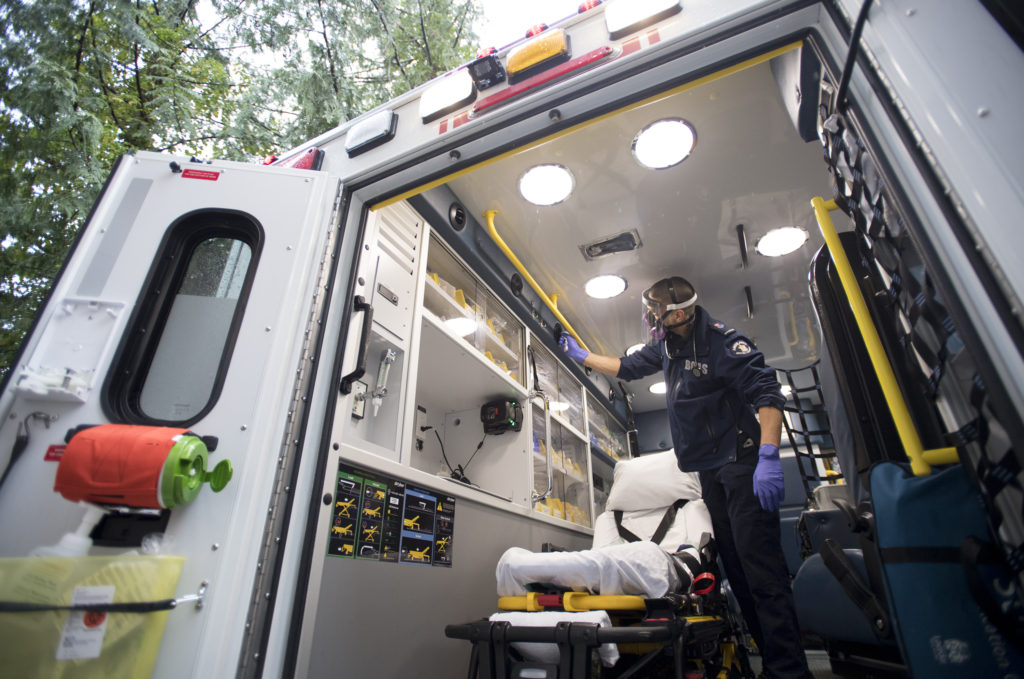
When Booton arrived, he put on protective gloves, a fluid-repellent gown, N-95 mask and face shield.
After a physical exam, they got back in the ambulance and Booton did what he always tries to do: comfort the patient. Paramedics see people during what can be pivotal personal moments and Booton felt the weight of the patient’s worry. As they travelled together towards St. Paul’s Hospital, he told the patient what he could expect in the emergency department and what types of tests he might undergo.
“I can only imagine what he was feeling in that moment, but it must have felt like a true sense of vulnerability to what uncertainty lay ahead,” Booton said.
Booton was one of at least 125 health workers, ranging from dispatchers and nurses to hospital housekeepers, who cared for the patient.
On that day, the patient was among 55 identified by dispatchers as possible COVID-19 cases in Vancouver.
Since the pandemic began, more than 50,000 people in Canada have tested positive for the new coronavirus, and federal government figures say at least 2,900 people have been hospitalized.
This is the story of those who cared for a single case at St. Paul’s.
EMERGENCY DEPARTMENT
Dr. Shannon O’Donnell knew she had only a few minutes to prepare after paramedics phoned the hospital to warn that a suspected COVID-19 case was on the way.
“I was a little anxious,” she said. “We don’t know what we’re getting, how much distress a patient is going to be in or how sick they’ll be. And you know, you’re worried also about being exposed to infection.”
The department had been eerily quiet after beds were vacated and the workflow was overhauled to make room for a possible surge in COVID-19 cases, O’Donnell said. Provincial health officer Dr. Bonnie Henry recently announced the province has been able to control the spread of the virus, but the caseload was still growing when the patient arrived.
The paramedics brought the patient directly into a negative pressure room set up for high-risk cases. Glass walls allow for filtration changes to reduce the risk of the virus spreading by air.
Like everyone the patient would interact with, O’Donnell examined him through a heavy armour of personal protective equipment. He was one of the sicker patients she’d seen.
“What was most striking to me was that he did require oxygen, but he also had a very high respiratory rate. He was breathing 30 breaths per minute, whereas you or I would breathe 15 or 16 breaths per minute,” she said.
COVID-19 has transformed not only the hospital but O’Donnell’s home life, too. She and her husband, also an emergency doctor, juggle the full-time care of their three children at home since schools closed.
Together, they decided that if there were a major outbreak, one would work at the hospital and self-isolate from the family, while the other would care for the kids.
“My husband likened it to both of us running into a burning building at the same time.”
O’Donnell ordered blood work, chest X-rays and an electrocardiogram scan, and conducted a chest ultrasound with the help of registered nurse Rachel Mrdeza.
For Mrdeza, some of the hardest cases have been the older patients who arrive incredibly short of breath, with a fever and chest tightness. Emergency department workers don’t typically learn if patients have COVID-19 because the test results come back after they move on from their care, but there can be strong evidence of the virus.
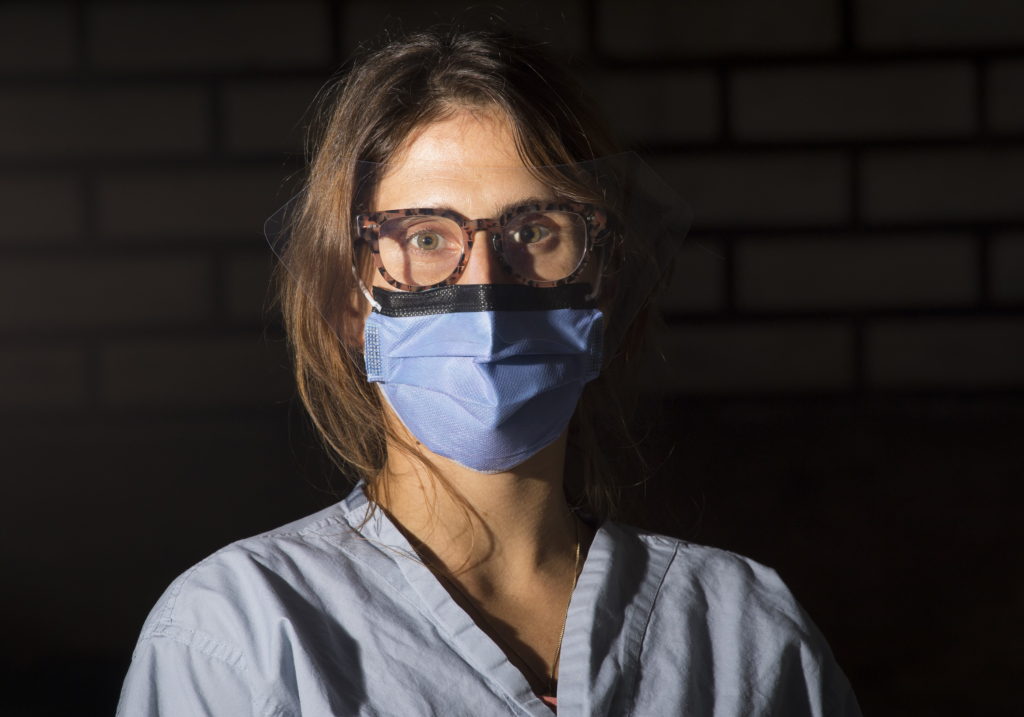
Under normal circumstances, the emergency doctor would work with several nurses but only one is allowed in the isolation room at a time to protect against contagion.
By the time QianQian Wu began her night shift, she was only the third nurse to see the patient.
Despite the promising case numbers in B.C., Wu said staff don’t feel like they can relax. St. Paul’s Hospital is the main treatment centre for vulnerable residents on the city’s Downtown Eastside, a neighbourhood that faces another public health emergency from the overdose crisis.
Wu began her shift by putting on the uncomfortable protective gear that she would wear all night. She tries to stay hydrated before work because she knows she can’t drink water with the mask on.
“It’s a little hard to breath sometimes,” she said. “And sometimes you get sleepy with it on for a long time, it’s very warm.”
Wu took the patient’s vitals and talked to him about his family and friends. She also noticed his laboured breathing.
TESTING
While the patient waited in the emergency department, blood samples and swabs were sent to the hospital’s laboratory.
Dr. Marc Romney, medical director of medical microbiology and virology, said manual molecular testing for COVID-19 typically requires five to 10 lab staff.
“It’s not like a pregnancy test you get from London Drugs, it’s much more complicated,” Romney said.
A porter transports the specimen, a technologist reviews whether it was ordered and labelled properly, then two or three technologists conduct a multistep process involving the extraction, purification, amplification and detection of the virus’s genetic material. A senior technologist and one or two physicians review the results before they are sent back to the attending physician and infection control team.
But the virology lab was transformed by the arrival of a machine in March that automates part of the process.
The Roche cobas 6800 system was adapted from HIV testing and lifted the lab’s theoretical capacity up to 2,000 tests per day, in combination with manual testing.
Romney excitedly talks about the changes and ideas they’ve come up with to deal with the pandemic.
“One of the machines that’s called an extractor, we had to be creative to bring it into the lab because we didn’t have a lot of capital dollars to do it, so we basically bought it off the internet second hand,” he said.
“We’re under tremendous pressure to deliver, it’s been a challenging time. But we’re pleased.”
It has also come at personal cost.
One technologist was basically living in the lab and sleeping only five hours a night.
Romney went weeks without a day off and didn’t see anyone in person beyond his immediate family and colleagues.
When 19 positive tests came back in a single day, another doctor “basically ran from her home” to the hospital to start communicating the results to doctors, public health officials and others who required the information, Romney said.
“The front-line workers are amazing, and we are here to support them but I think it’s good for people to know there are also a lot of people behind the scenes working on this too,” he said.
“It’s not just machines that are being plugged into walls, it’s very human what we do here.”
Romney said the lab staff are mindful that time is critical in fighting the virus.
“It’s a sacrifice but we understand the importance of what we’re doing and there’s kind of a window of opportunity to try and contain the virus. Part of that is testing.”
THE TRANSITION TEAM
More severe suspected COVID-19 cases are sent to the intensive care unit for isolation. Back in the emergency department, Dr. O’Donnell called Dr. Mathieu Surprenant for an assessment while they awaited test results.
The 29-year-old clinical associate put plans to move back to Montreal on hold when the pandemic struck. Moving in with other doctors seemed too risky, so Surprenant remained in his nearly empty apartment in B.C. on an extended lease.
“I’m sleeping on my inflatable mattress and I’m trying not see anybody,” he said, laughing.
“It’s been very lonely because when I’m not working, I’m not doing anything.”
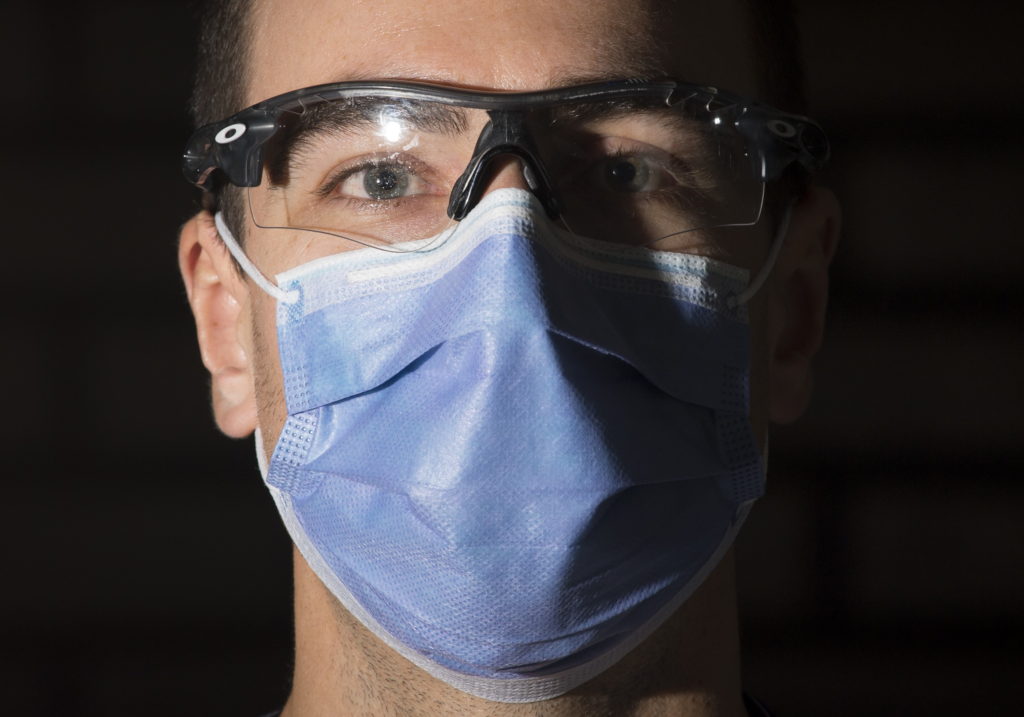
When he got the call from emergency, Surprenant headed downstairs with resident Dr. Charles Yang.
This wasn’t the hospital’s first suspected COVID-19 case and Yang found himself wondering if it would follow the same trajectory as others.
“In my mind I was wondering, OK what are the precautions I need to take in order to protect myself and other patients while maintaining the level of care I would typically provide for a patient,” Yang said.
He thought of his fiancee at home and whether he would be putting her at risk.
The team examined the patient to develop his care plan. They looked at his oxygen levels and also at the patient himself. Did he look comfortable? Was he struggling?
“What we’re sort of afraid of is that they reach a certain point where they’re able to compensate with their own physiology and eventually just tucker out and decline at a rapid pace,” Yang said.
A crash intubation would be risky for staff because of the time it takes to put on protective equipment, and a chaotic rush into an isolation room could spread the infection. A care plan puts everything in place for a controlled intubation, if a patient appears likely to decline.
The team talked it over and the patient was transferred to the ICU for monitoring overnight.
But it wasn’t long before his oxygen levels began to concern Surprenant.
Best practices change rapidly as new information becomes available about the new coronavirus, the doctor said.
Initially, for example, the idea was to intubate as soon as possible because if a patient gets too ill, his chance of dying on a ventilator increases. But intubation is also more invasive than other procedures and risky for health workers because it pushes droplets of the virus into the air.
Since the pandemic began, recommendations have relaxed to allow for other treatments first but it’s a constantly moving target, Surprenant said.
He believed the patient had reached the stage where intubation was his best chance at survival.
Making that call meant calling in a group dubbed the COVID airway team. Early in the pandemic, the experts in both airway management and donning and doffing specialized protective gear waited on call in a hotel across the street.
“Just dressing takes between five and 10 minutes,” Surprenant said. “They look like astronauts with all the layers.”
THE COVID AIRWAY TEAM
Anesthesiologist Dr. Shannon Lockhart was part of the planning group that conceived of the COVID airway team.
The cancellation of elective surgeries meant the traditional workload for Lockhart and her colleagues would be lighter. Their idea was to form teams with respiratory therapists to perform intubations so that emergency and ICU doctors wouldn’t expose themselves to the high-risk procedure.
Anesthesiologists self-selected into one of three groups: The first wave was ready to start serving on the COVID airway team immediately. The second would step in if the first wave got sick. And the third would not participate because they or their loved ones were at risk of serious illness if exposed to the virus.
For Lockhart, the decision to be part of the first group, known as the “green team,” was easy. The hard part was creating a plan that would call on others to face the same risk.
“I’m 35 years old, I’m young and healthy. I have a family who is young and healthy, so the personal risk was pretty low for me,” she said.
“More challenging for me was identifying this was a useful model for our group, who are my colleagues and friends, and thereby potentially offering the services of people and putting them at higher risk.”
The uptake was good, however. She was among 16 who volunteered for the green team, making it viable.
When Lockhart was called to intubate the patient, she was ready.
“He fit the story of what you hear about COVID patients who look really well from the bedside, but their numbers don’t look that great,” she said.
Putting a breathing tube down a patient’s throat under normal circumstances takes between five and six minutes, she said.
That time frame has ballooned to between 60 and 90 minutes dealing with the extra protective gear, preparing every possible material you could need in isolation, and the cleaning or disposal of everything in the room.
Dressing feels like a race when someone is struggling to breathe. Once inside, the urgency to clear the airway is intensified by the heat the suit produces.
“The longer we’re in the room, the hotter we get and the foggier our eye protection becomes,” Lockhart said.
Lockhart and a respiratory therapist gave the patient a sedative and paralytic, and inserted the breathing tube while another anesthesiologist waited outside as backup.
Working with different colleagues in an unfamiliar setting wearing cumbersome new equipment is stressful, Lockhart said. But she’s been heartened to watch hospital staff quickly respond and break down silos in which they typically operate.
After intubating the patient, the riskiest part of Lockhart’s new job is doffing her gear.
As the patient relies on strangers for care, Lockhart too relies on someone she barely knows for her own protection. She and the respiratory therapist watch one another carefully as they remove the equipment piece by piece, monitoring for any slip that would allow contamination.
“It’s kind of an interesting position to be in when you’re trusting this person with this very important task but you may never have met them before.”
THE ICU
When Dr. Gavin Tansley met the patient, he was already sedated and breathing through a ventilator.
Tansley had given the OK for intubation when Surprenant woke him up with a phone call. He was already familiar with the patient’s case.
Where possible, ICU staff keep an eye on patients they might inherit from other departments, said Tansley, a general surgeon training in critical care. They ask themselves, if things get worse, what would we do?
In the ICU, the acute focus on ventilation shifts to the more holistic care of all the patient’s major organ systems.
“Critical illness is a bit of a funny thing where you really do recognize how intertwined all of these organ systems are,” Tansley said.
“With COVID in particular we see very familiar patterns where often times the kidneys won’t be working 100 per cent, sometimes the heart won’t be working 100 per cent. So, we need to support those organs with other medications or sometimes we need to add dialysis or additional interventions to optimize things as best we can while the body tries to deal with that virus.”
When Tansley decided to become a doctor, he wanted to help people heal. He didn’t realize then that in the ICU, he wouldn’t get to know his patients very well.
“Very often by the time I meet patients, they’re already sedated or on a ventilator or so sick that they can’t talk to you. So, your relationship becomes with the family, and you develop amazing relationships,” he said.
Reflecting on the case, Tansley said it reinforced some recent thoughts he’s had about critical illness that don’t get discussed. So much focus is on the patients, but their families are often experiencing trauma.
“Conversations we’ve had with this particular family reinforced that he was very, very cared for within this family and they were very much struggling with the fact that he was unwell.”
Being unable to visit their loved ones during the pandemic has added an extra layer of grief, he said.
It has been hard for staff to keep families from their loved ones, but they are finding ways to help them connect. Tansley sets aside time to phone them with updates. Nurses hold iPads up to patients so their families can at least see them on video.
Whatever they try, it’s not the same as being able to hold a loved one or even sit with them. The grief can add an extra layer of emotional stress for health workers as well.
“It’s just one of the many ways the coronavirus has changed the way we have to practise medicine.”
RECOVERY
By the time the patient reached the ICU, about 25 health workers had already played a role in his case. Some interacted with him directly, while others played important but indirect roles in his care, ranging from hospital housekeepers to X-ray technologists.
About 90 intensive care staff saw him, and from there, he would be turned over to a general medicine team.
Recovery is a long road involving a wide network of specialists from dieticians to speech pathologists and social workers. Behind the scenes, hospital administrators, education and outreach teams also do their part.
Kevin Novakowski is a respiratory therapist and in his 28 years of work, he’s never felt an illness create such a constant psychological burden.
“It’s changed me in a way,” he said. “It’s kind of always on my mind.”
In recovery, a patient begins physiotherapy to build his strength. Novakowski is there monitoring how it affects his breathing.
It can take weeks to months, and some never fully recover. Between 30 and 60 per cent of survivors of critical illness have ongoing medical or mental health issues, said Dr. Del Dorscheid, who oversees the ICU as an attending physician. That can mean residual lung disease for COVID-19 survivors, whom he said may receive intensive care for a week or more than a month.
But the first major step toward independence is weaning a patient off the ventilator.
As Novakowski monitored the patient, he began reducing the ventilator’s power and gave him short trials without it.
“You’re looking at their breathing and watching them and focusing on how their muscles look. Are they struggling for air, are they taking deep breaths, are they breathing fast, are they breathing shallow?” he said.
Weaning is a gradual process, like an ebbing tide. Off the ventilator, a patient’s breath rattles.
“They cough and they sputter,” he said.
The rattle may disappear then return when they stand for the first time, or when they start walking.
It’s a stressful process for patients. If they don’t keep coughing to clear their airway, infections can return.
During those first trials, Novakowski waits and listens.
“You listen to them breathing,” he said. “And then all of a sudden, it’s just kind of really quiet and their breathing just sounds like our breathing, normal.
“And you think, OK. That’s good.”
This report by The Canadian Press was first published April 30, 2020.

